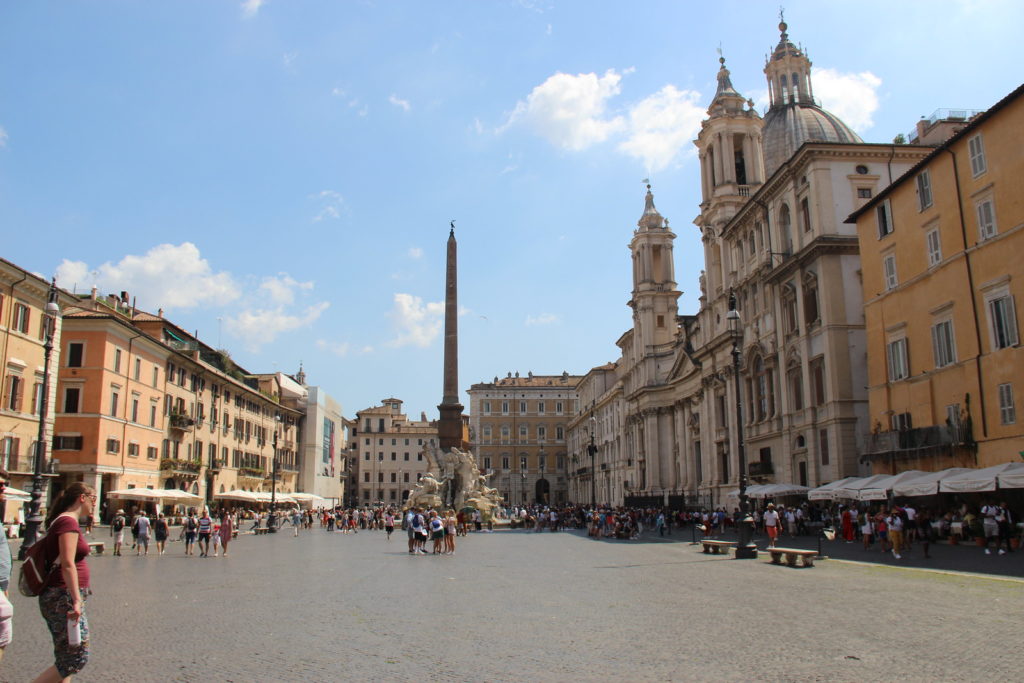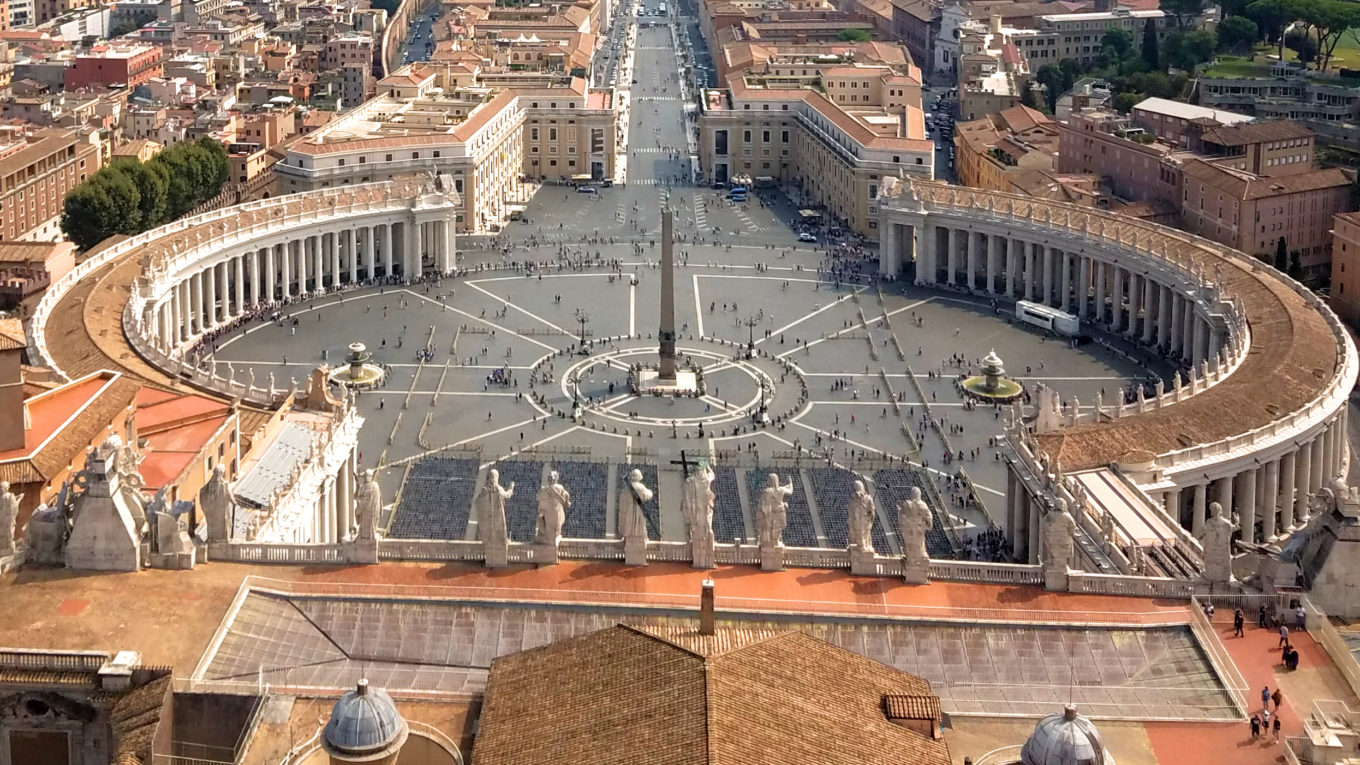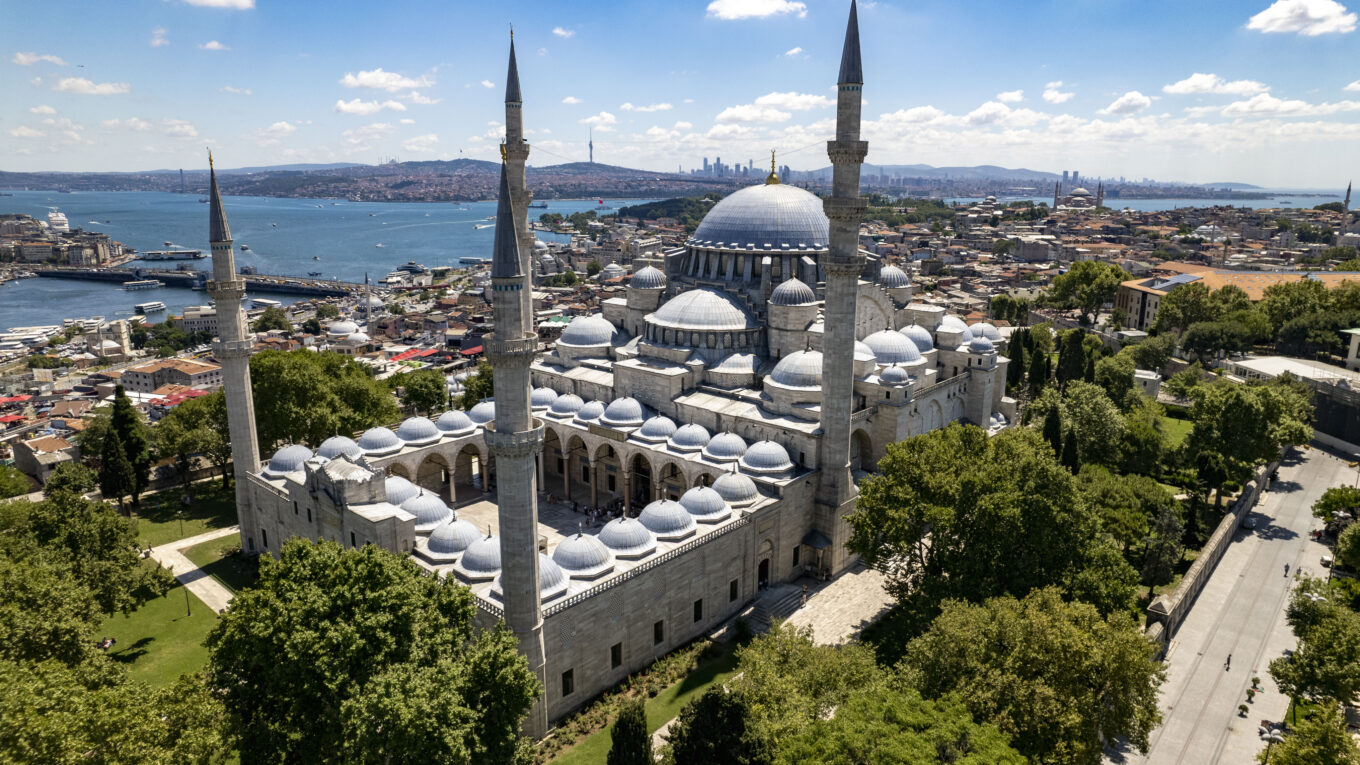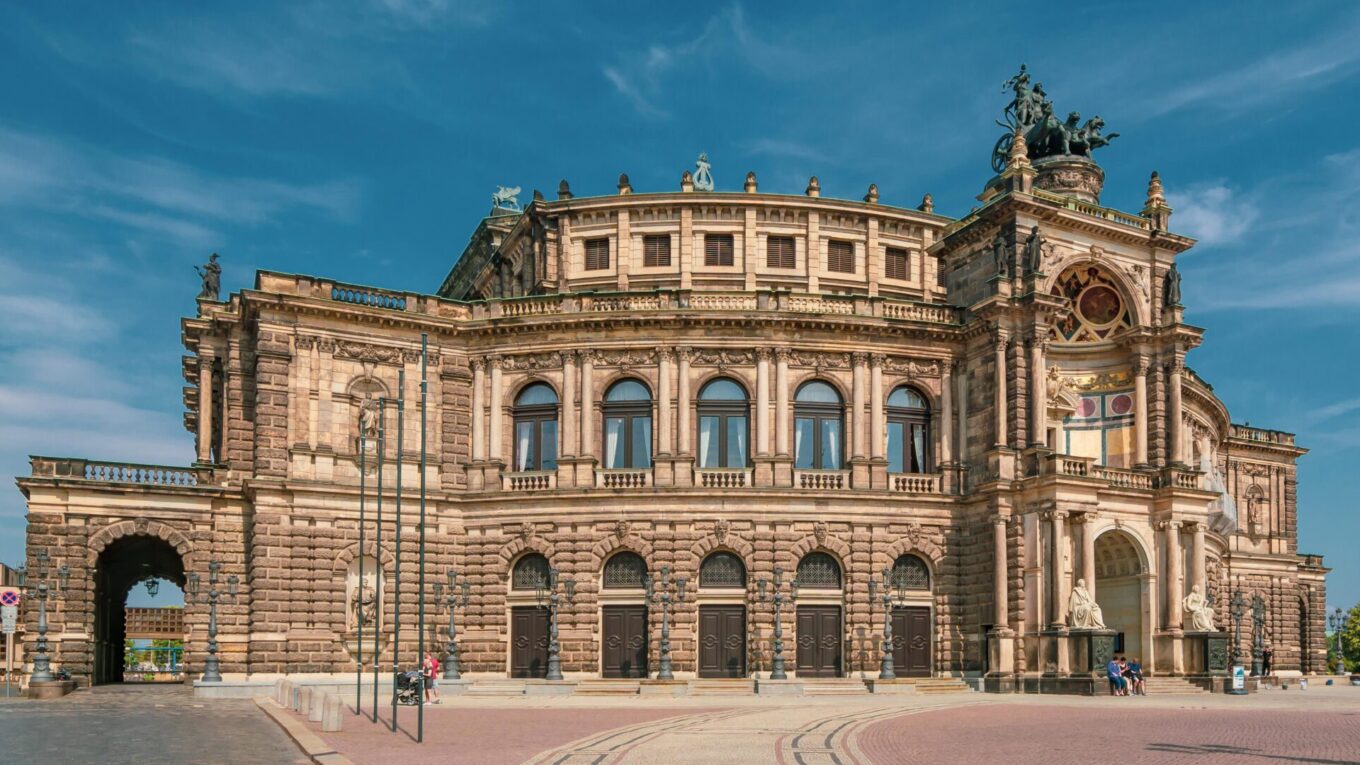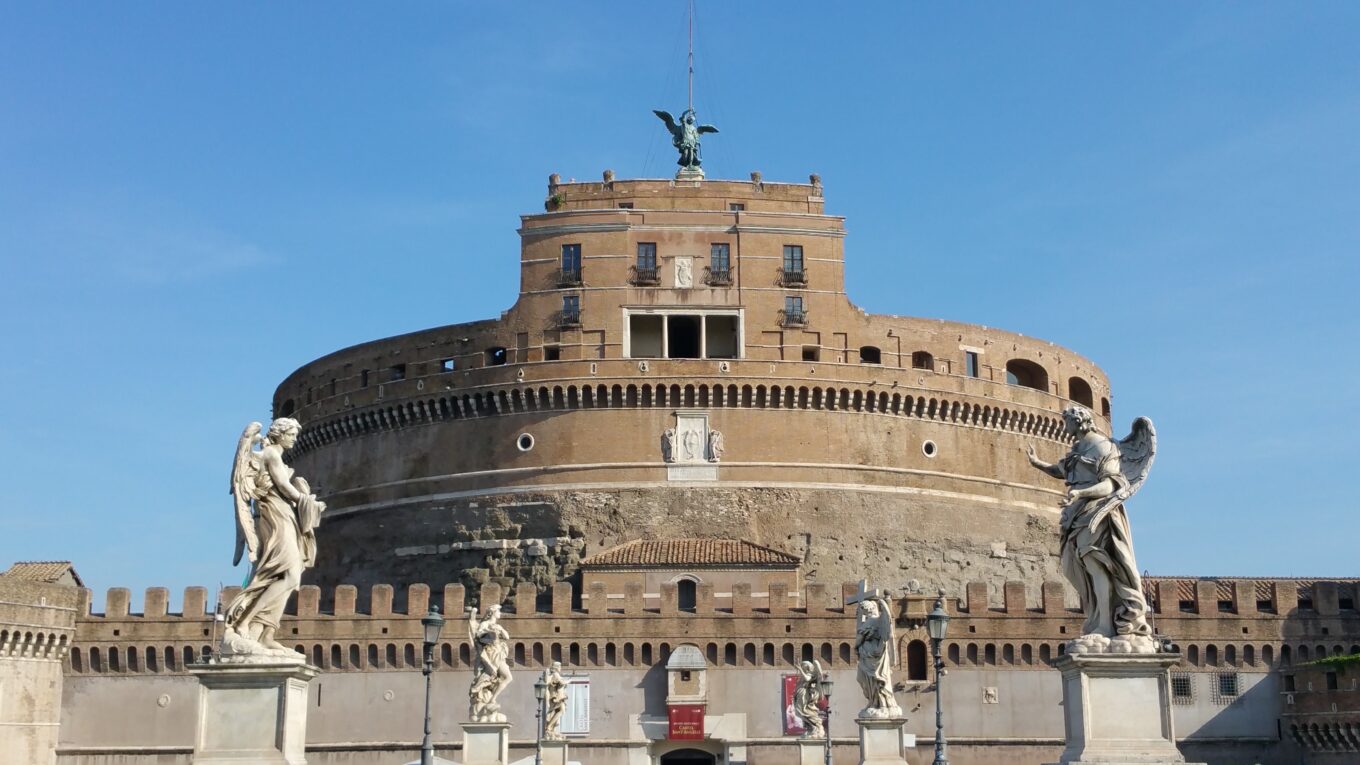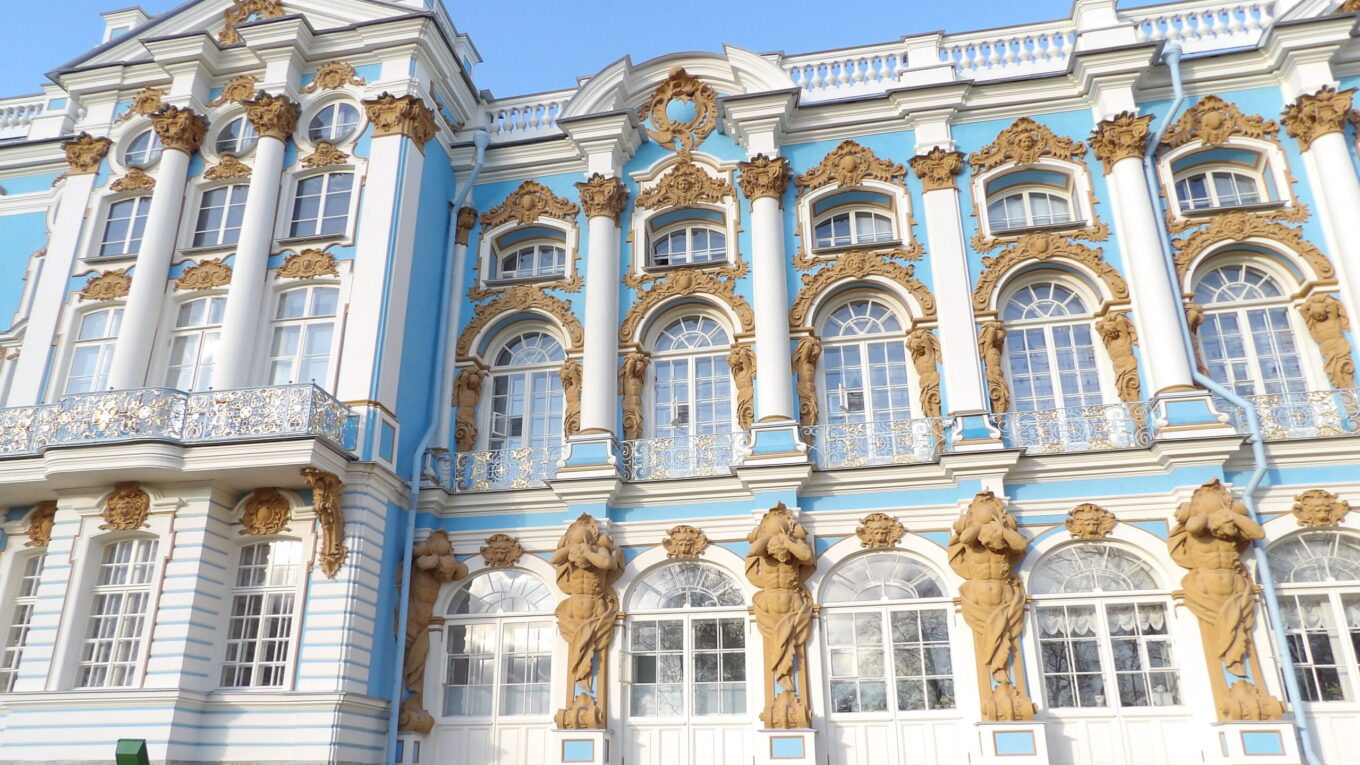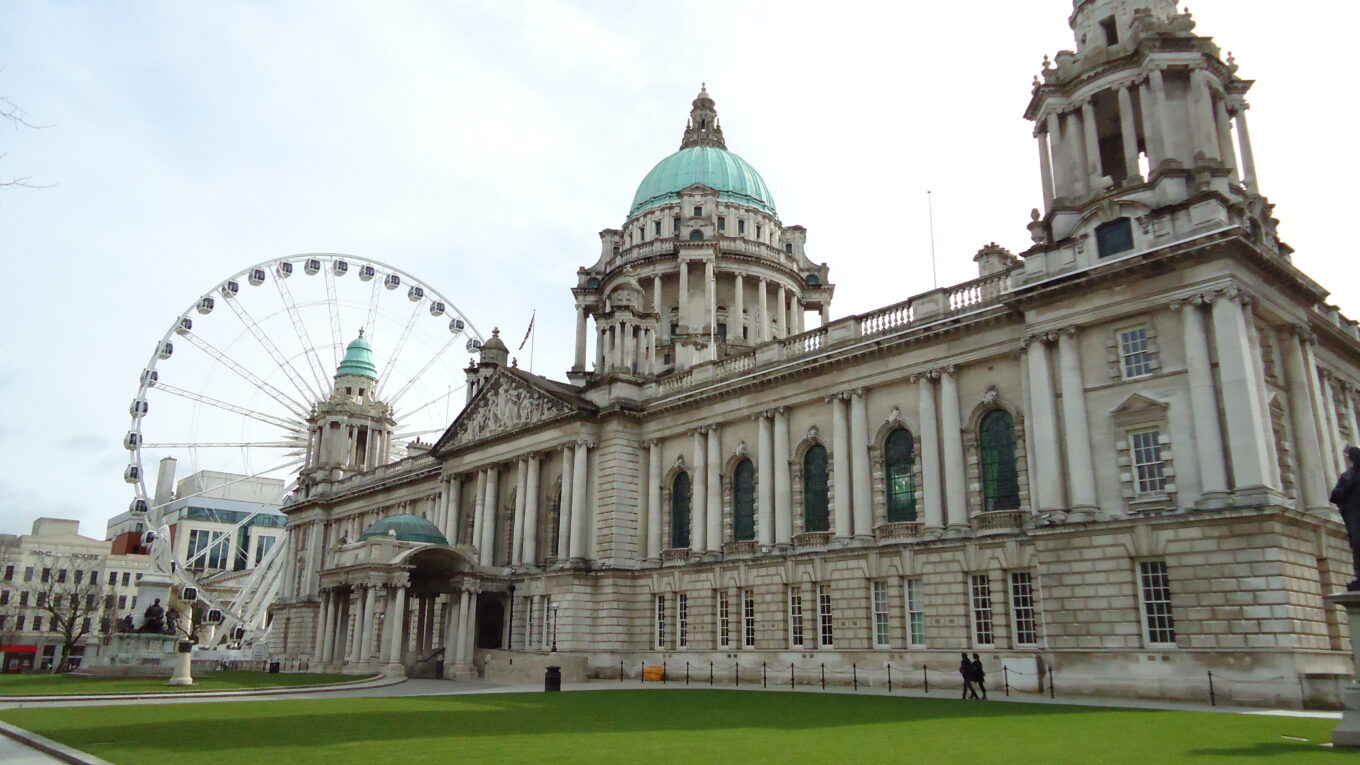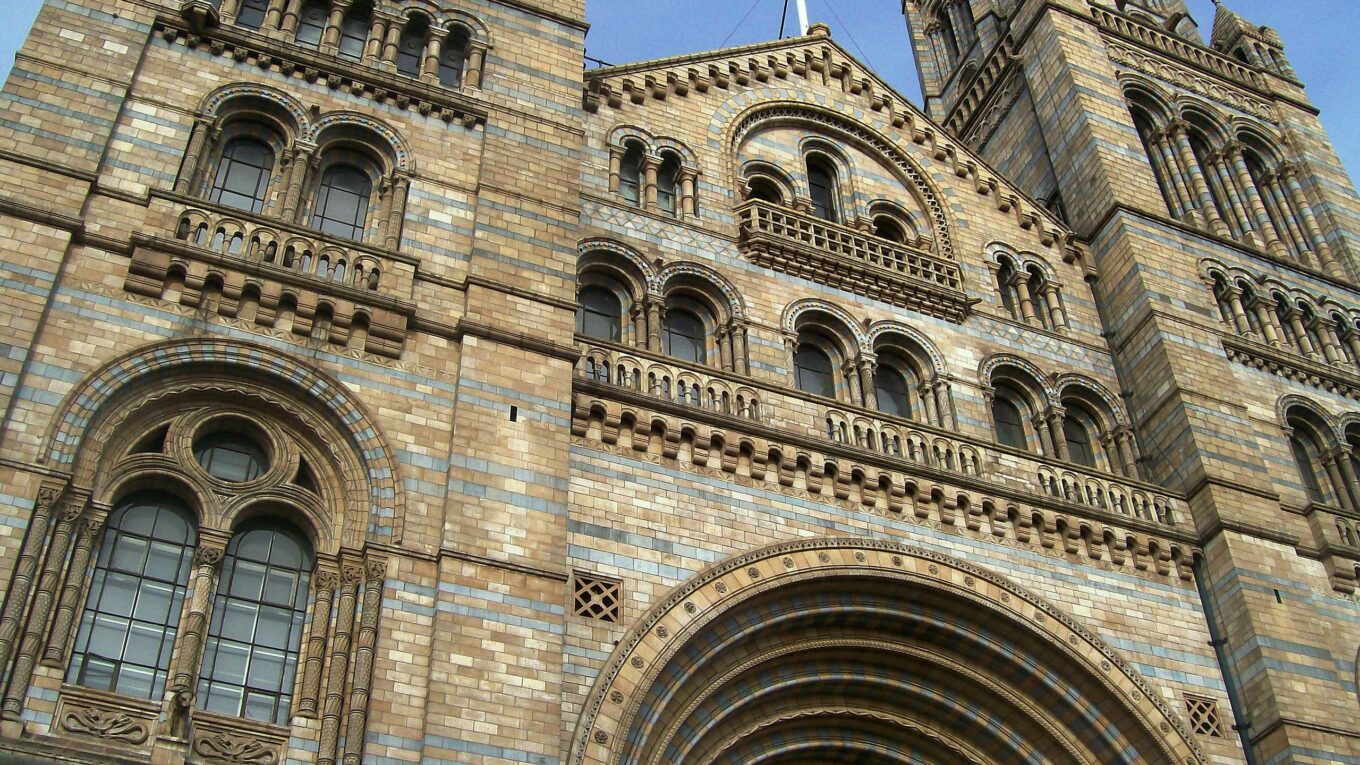Top 15 Italian Piazzas
Piazzas are an integral part of all Italian cities, and they have been around since the days of the Ancient Roman Empire and the Roman Forum. Piazzas serve as assembly spaces that are popular with holidays and festivals. They are often centers of culture, religion, and commerce. Italian Piazzas are also incredible because of how varied they are throughout Italy. There are piazzas that contain great monuments, that are large and commercialized such as Piazza San Marco in Venice. As well as small quiet piazzas that are filled with cafes and casual seating such as the Piazza Del Duomo in Syracuse. This article will showcase 15 of the greatest piazzas that can be found within Italy today, highlighting the different elements that make each piazza unique.
History of Italian Piazzas
Piazzas have been an important part of Italian Architecture and Urban Planning since the days of the Roman Empire. Every Roman city had a Forum, which was a place where crowds would gather, business would be done, and people would meet and greet their friends and family. After the fall of the Roman Empire, the idea of a forum lived on in medieval cities like Florence, Rome, and Siena. As Italian Architecture evolved, various styles began to take shape. They appeared starting with the Romanesque Style and continuing on to the Gothic, Renaissance, and Baroque movements. Various piazzas were completely remodeled in these styles and all of these forms of architecture can be seen within the piazzas of Italy.
What are the best examples of Italian Piazzas?
1. St. Peter’s Square – Vatican City (Rome)
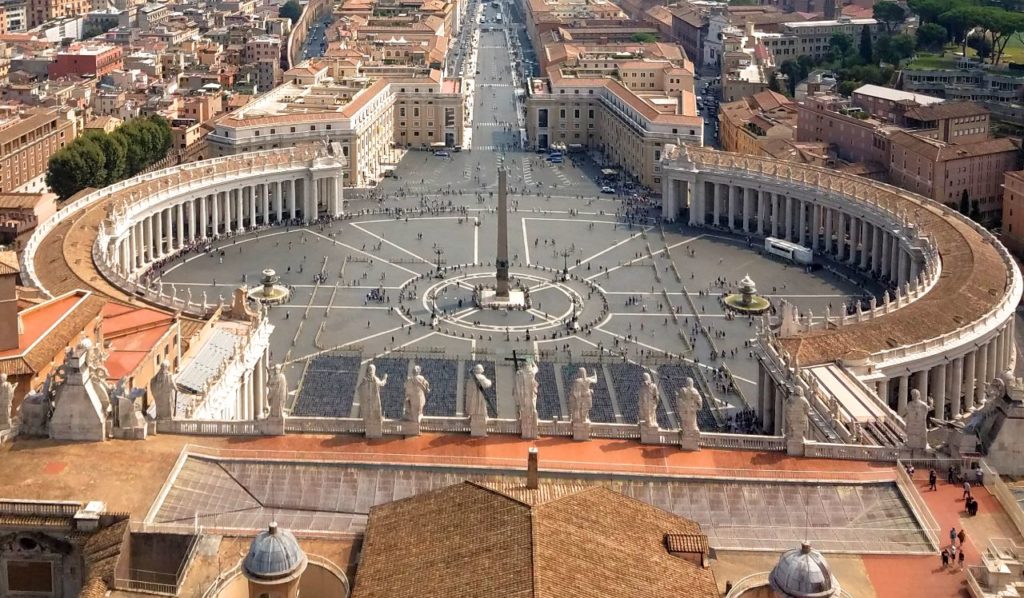
St. Peter’s Square or Piazza San Pietro, is located within Vatican City in the heart of Rome. The original plan of the square corresponds to a former Roman Racetrack. It was designed by Gian Lorenzo Bernini, who helped put some of the final touches on St. Peter’s Basilica including the square and the famous Baldacchino located inside the church. Bernini is regarded as one of the greatest architects of the Baroque Age, and he completed many different buildings in Rome. St. Peter’s Square was designed with several distinct elements of Baroque Architecture, such as the elliptical plan, and the intricate baroque sculptures atop the colonnade. The exact center of the space is marked by an ancient Egyptian Obelisk, one of several brought to Rome by the Ancient Roman Emperors.
2. Piazza del Duomo – Milan, Lombardy

Piazza del Duomo is the main cultural and commercial center within the city of Milan in Northern Italy. It’s named for the Duomo di Milano, the principal cathedral of Milan, and one of the finest Gothic Cathedrals anywhere in Europe. Construction began on the church toward the end of the Gothic Age in the 14th Century, but the Piazza del Duomo actually predates the church by a few centuries. On the left side of the image above you can see the second most famous site within the piazza, the Galleria Vittorio Emanuele II. This is a popular covered retail market that was built to commemorate the unification of Italy in the late 19th century. Today thanks to its incredible monuments, the Piazza del Duomo remains one of the most popular squares in all of Europe.
3. Piazza San Marco – Venice, Veneto

Named for the patron saint of Venice, Piazza San Marco is the largest square within the city and it’s among the most famous piazzas in all of Italy. The rhythmic facades that front the square each share the same heights and proportions, which gives the square a consistent appearance. It makes it seem like Piazza San Marco was built at the same time by one architect’s designs when in reality the buildings were built completely separately. This contrasts with many other squares in Europe, where you see an amalgamation of medieval buildings of different shapes and sizes. The unity, symmetry, and repetition are all distinct elements of the Renaissance Style, a form of architecture that was born in Italy in the 15th century. Thanks to its Renaissance Architecture, as well as its Byzantine-style basilica, Piazza San Marco is one of the most impressive squares in all of Italy.
4. Piazza Della Signoria – Florence, Italy

The Piazza della Signoria is an open space that serves as Florence’s main cultural and political center. The Palazzo Vecchio (on the left side of the image above) served as the seat of the rulers of Florence throughout the Middle Ages, and at one point it became the home of the powerful Medici Family. The Loggia dei Lanzi (center of the image) also occupies a large part of the square. The loggia was built over the span of 6 years, starting in 1376, and it contains several notable works of Renaissance Sculpture. Many famous events in Florence’s history took place right here in this square, such as the unveiling of Michelangelo’s David, and the execution of Girolamo Savonarola.
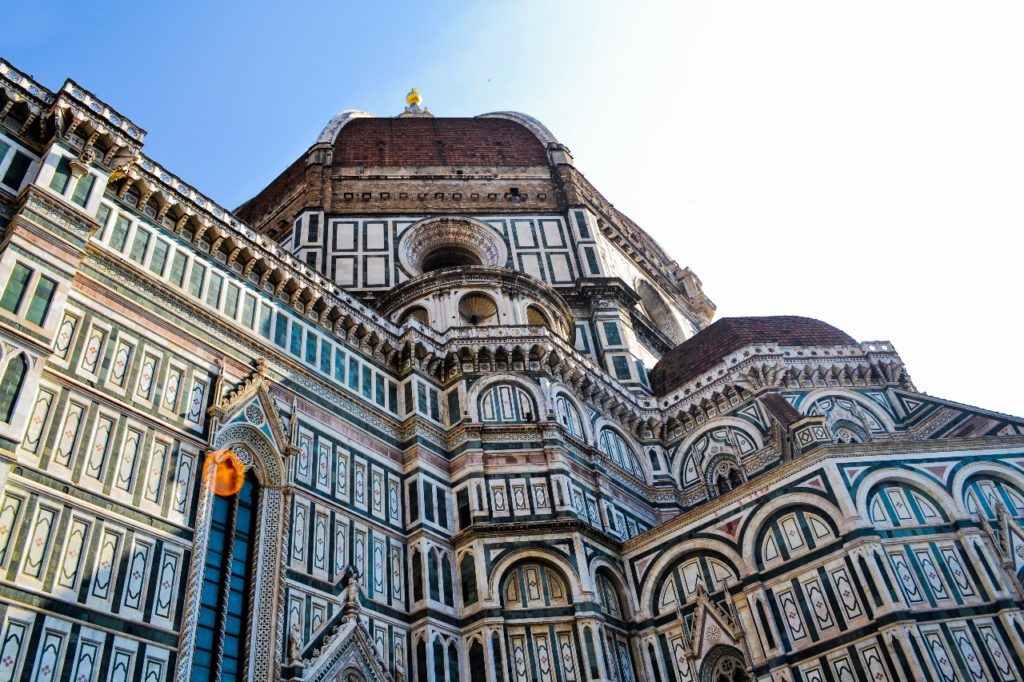
Check out our article on the Architecture of Florence to learn more about the birth of the Renaissance in Italy.
5. Piazza Navona – Rome, Lazio
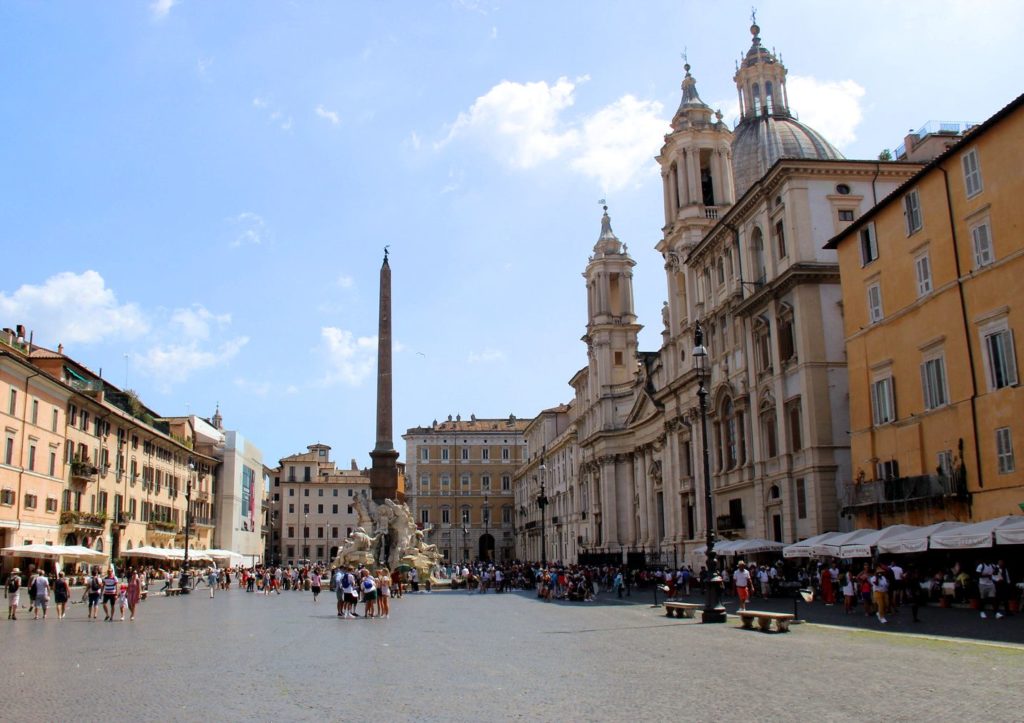
Piazza Navona is another famous piazza in Rome, and like St. Peter’s Square, it was built over the remains of an Ancient Roman Racetrack. But while St. Peter’s Square is a monumental work of religious architecture, Piazza Navona is a commercialized square that contains bars, restaurants, fountains, as well as churches. It’s popular with both tourists and locals thanks to its incredible ambiance and its impressive architecture. The Fontana dei Quattro Fiumi or the Fountain of the Four Rivers, is a Baroque Fountain located within the center of the square. The fountain was designed by Gian Lorenzo Bernini in the mid-1600s and it sits in front of a Baroque Style Church named for Sant’Agnese.
6. Piazza del Plebiscito – Naples, Campania
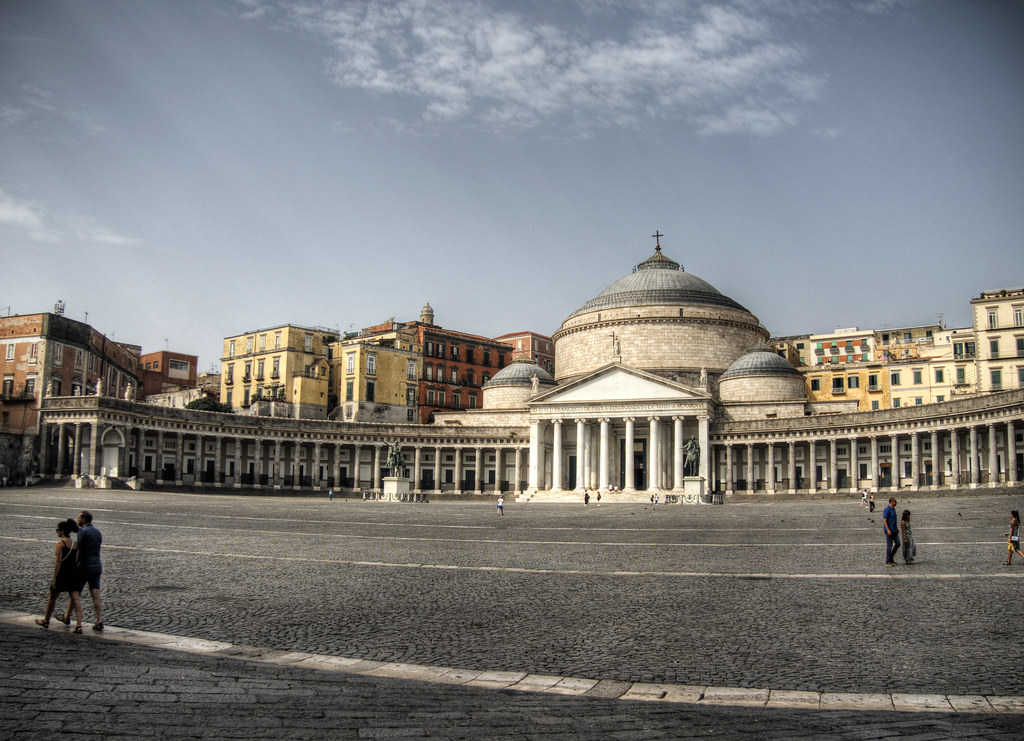
The center of Naples is the most densely populated city center anywhere in Europe. Neapolitans, like a lot of Italians, have a long tradition of living within the city and in the city squares, rather than staying indoors in small tightly packed apartments. Because of this Naples is extremely lively, with daily life occurring throughout the streets and squares. Among the dozens of piazzas in the city, Piazza del Plebiscito is probably the most impressive in terms of architecture. The church of San Francesco di Paola is a Neoclassical Style building located at one end of the Piazza. It was built in the mid-19th century and the main body of the church resembles the Pantheon, but with additional domes and a large symmetrical colonnade on either side of the entrance.
7. Piazza del Popolo – Rome, Lazio
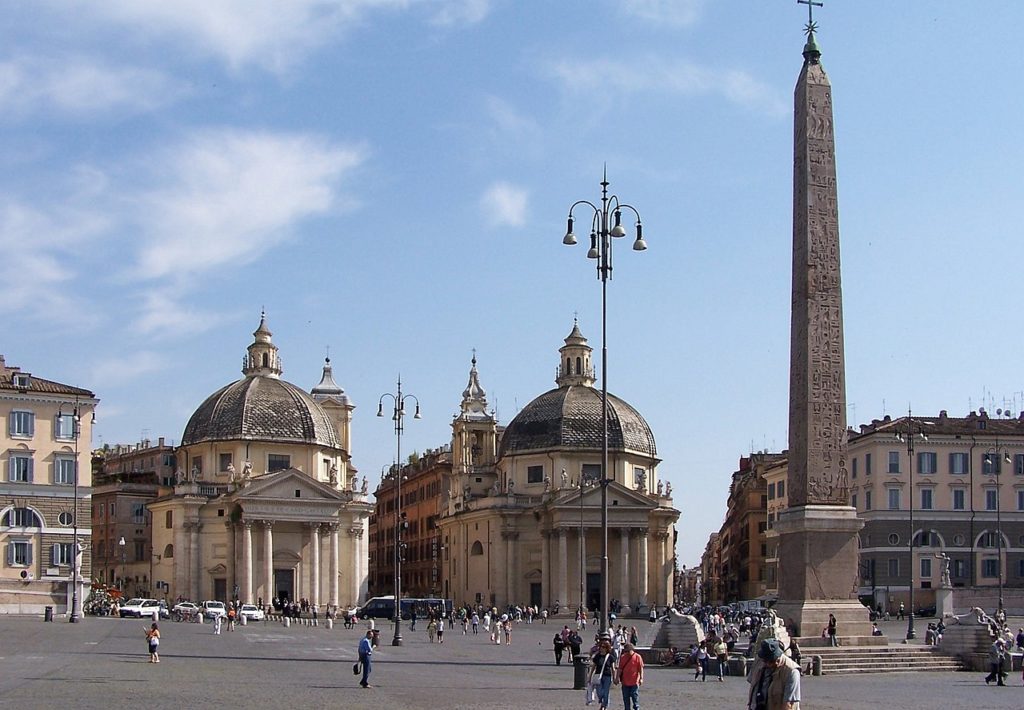
The third Roman Piazza on this list, Piazza del Popolo, is another one of Rome’s spectacular public squares. It features a Neoclassical Style plan resembling an oval, which was completed during a renovation of the piazza in 1822. Some of the elements within Piazza del Popolo were in place long before the neoclassical renovations, including the twin churches of Santa Maria. Santa Maria dei Miracoli and Santa Maria in Montesanto both date to the 1600s during the Baroque Age. At the center of Piazza del Popolo stands an obelisk that was erected during the reign of Pharaoh Ramesses II, and was transported to Rome by Emperor Augustus.
8. Piazza del Campo – Siena, Tuscany

The Republic of Siena was one of Tuscany’s leading city-states during the Middle Ages. Before it was absorbed into the Republic of Florence, Siena had an independent government that was exceptionally well run. There was a focus on the people, and many government subsidies such as free bread were given to the city’s poor. The government of Siena commissioned many incredible works of architecture that were catered to the public, including the Piazza del Campo and the adjacent Palazzo Pubblico. The Piazza is a geometric work of art, with a gentle slope made up of 9 triangles that all dip into the land creating a gentle slope that’s great for sitting. The 9 triangles symbolize the 9 individuals that shared their power and governed Siena.
9. Piazza del Duomo – Syracuse, Sicily

Piazza del Duomo is the principal square for the Sicilian city of Syracuse. Syracuse was founded as an ancient Greek Colony, one of several within Sicily and southern Italy. Parts of the piazza date back to the days of the ancient Greeks, including the foundations of the Cathedral of Syracuse. The church originated as a Doric Style Temple, that was continuously modified over the centuries. The Front facade that faces the square was built during the Baroque Age in the early 1700s. Syracuse suffered a terrible earthquake in 1693 which led to the reconstruction of this new facade as well as several of the other buildings within the Piazza del Duomo.
10. Piazza della Erbe – Padua, Veneto

The Piazza della Erbe served as the main commercial square within the city of Padua for centuries. Padua was part of the mainland territories of the Republic of Venice for a period of time beginning in 1405. Although much smaller than many of the other Italian piazzas on this list, the Piazza della Erba is known for its imposing architecture. The Palazzo della Ragione is the main building fronting the square. It dates to the late 12th century, and it acted as a market hall throughout the Middle Ages.
Like Architecture of Cities? Sign up for our mailing list to get updates on our latest articles and other information related to Architectural History.
11. Piazza Unita di Italia – Trieste, Friuli Venezia Giulia
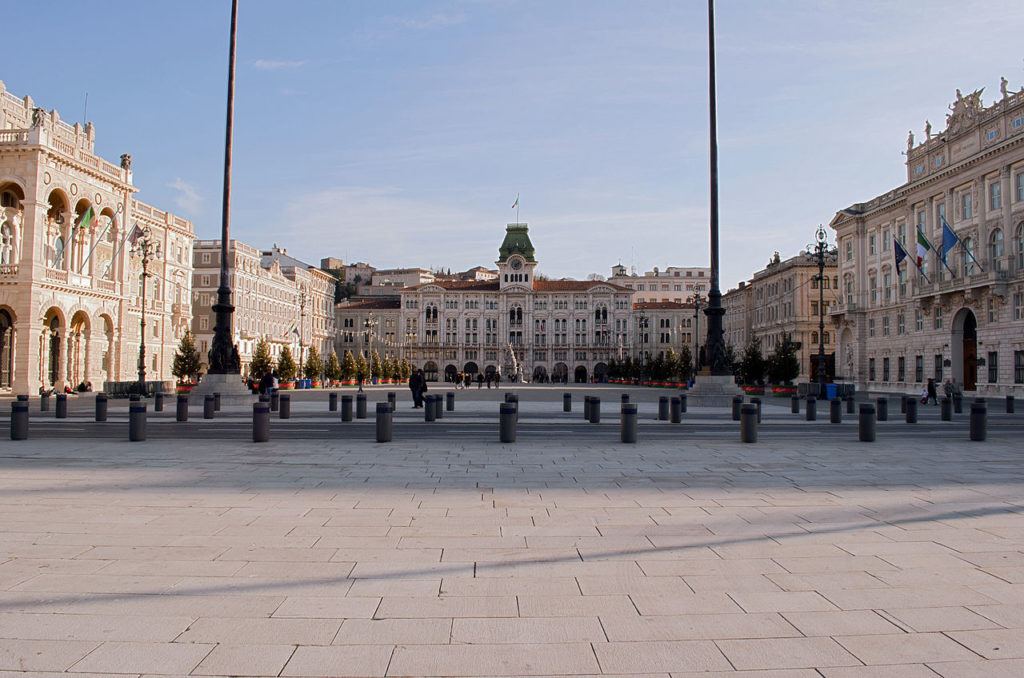
Trieste is a port city located on Italy’s Adriatic Coast. One of the largest open spaces within the city is Piazza Unita di Italia. The piazza has a rectangular shape, with three sides surrounded by buildings, and the fourth side opening up to the Adriatic Sea. The square is fronted by buildings from several different architectural ages including Baroque and Neoclassical, and the Baroque Era Fountain of the Four Continents sits within the piazza’s interior. The Piazza Unita di Italia is named to honor the Unification of Italy which was completed in 1871.
12. Piazza Vittorio Veneto – Turin, Piedmont
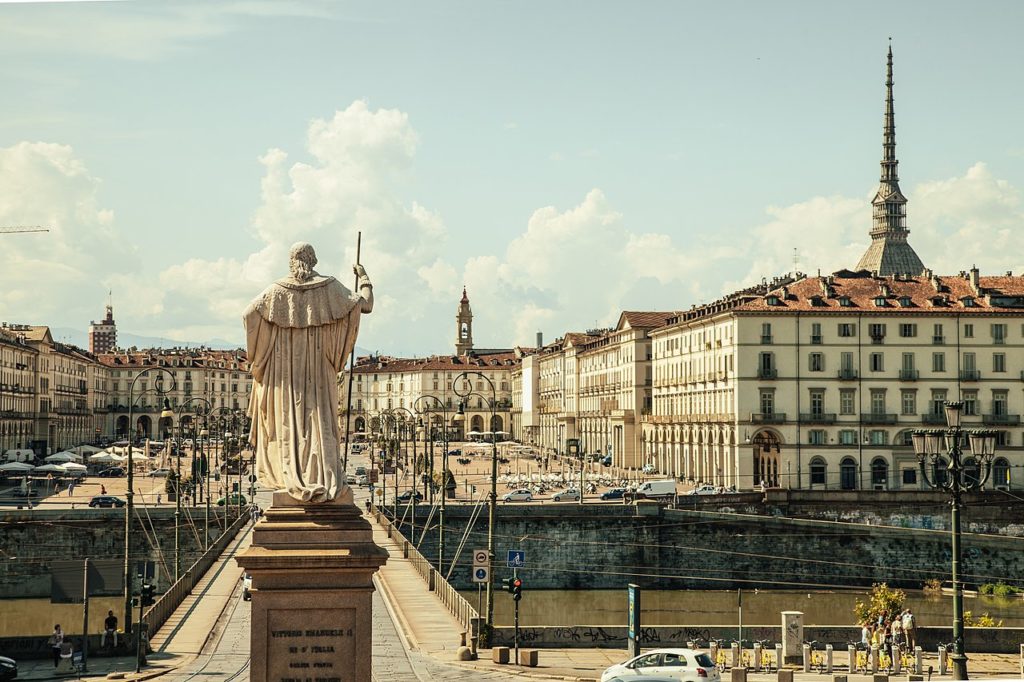
The Piazza Vittorio Veneto is named to honor the decisive WWI battle of Vittorio Veneto. It was fought between Italian Forces and their allies against the armies of the Austro-Hungarian Empire. The Allied victory secured the Italian Front, which was a combat zone that had been one of the bloodiest fronts in the entire First World War. Today the piazza is a popular spot for bars and restaurants, and it is one of the liveliest areas within all of Turin. It is surrounded by a nearly continuous colonnade, and the southern edge of the square is open to the banks of the Po River. The Piazza Vittorio Veneto is also one of the most popular crossing points to the southern side of Turin, thanks to a bridge named after Vittorio Emanuele I. You can get a great sense of the piazza as well as the entire city of Turin by checking out this Photo Sphere.
13. Piazza Trento e Trieste – Ferrara, Emelia-Romagna
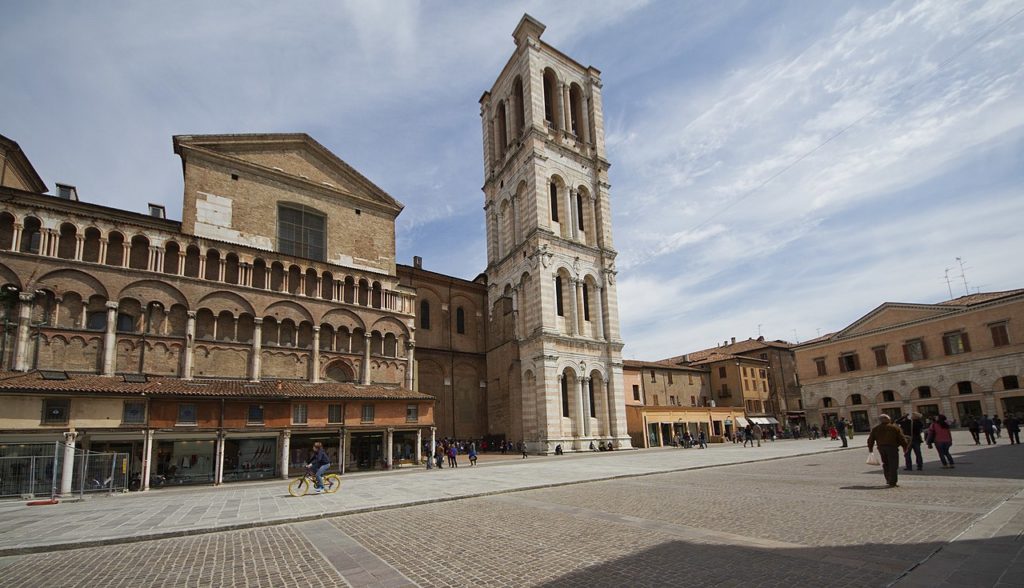
Ferrara is a city in northern Italy located between Bologna and Venice. It has a long and storied history and it was part of the Papal States for nearly 300 years. The Piazza Trento e Trieste is one of Ferrara’s largest squares and it surrounds Ferrara Cathedral. The church was built over time throughout the Romanesque and Gothic Ages, starting in the early 12th century. The bell tower, located at the southeastern corner of the cathedral, stands tall over the piazza below. The majority of the tower dates to the Italian Renaissance, but the opulent marble veneer was never completed.
14. Piazza Venezia – Rome, Lazio

Named after the Italian city of Venice, Piazza Venezia is a busy square located in the heart of the Italian Capital city. While some piazzas on this list are free of cars, the large traffic circle within the piazza is part of Rome’s modern road network. Despite the noise and congestion from the bustling Roman traffic, many visitors flock to the Piazza Venezia to see the Altar of the Fatherland. In the image above you can see the view from the massive marble staircase at the front of the monument. The altar of the Fatherland stands 266 feet (85 M) tall, and the stairs bring visitors upward to see incredible views of Piazza Venezia and the rest of Rome. The Altar of the Fatherland is part of a massive Neoclassical Temple built to honor Vittorio Emanuele II, who spearheaded the unification of Italy in the late 19th century.
15. Piazza Grande – Modena, Emilia-Romagna
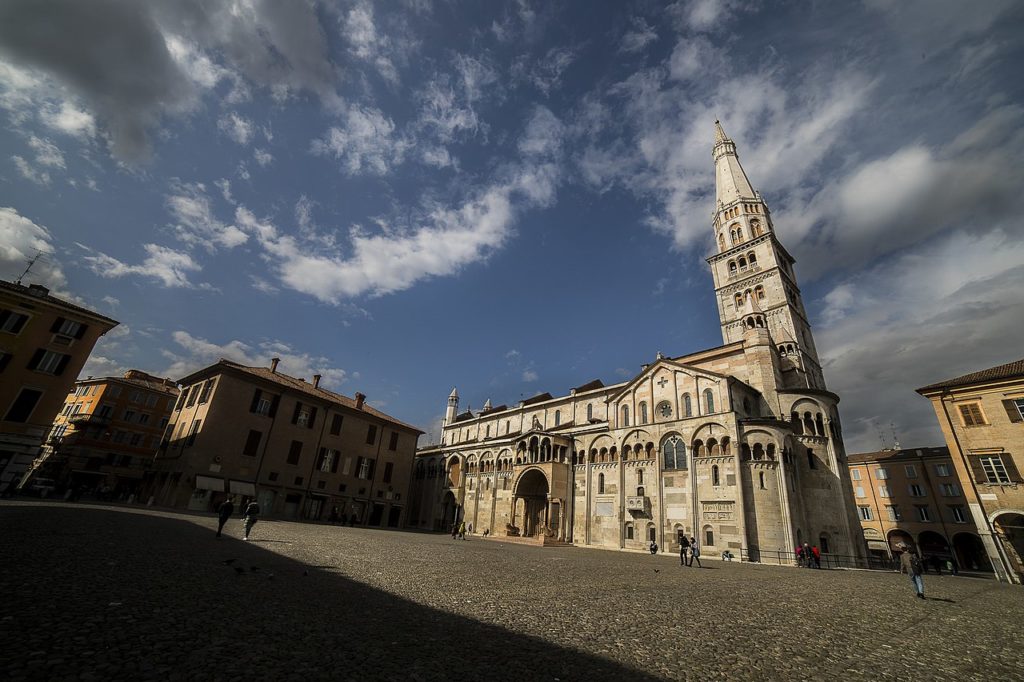
Piazza Grande is a large square located within the city of Modena. Modena, which was often governed in a unified duchy with the city of Ferrara, is home to one of Europe’s most incredible Romanesque Cathedrals. The cathedral was constructed during the 12th century and was consecrated in the year 1184. The exterior of the church and the bell tower were built using marble, a material popular in other churches such as Pisa Cathedral and Florence Cathedral. Today the Cathedral of Modena and the surrounding Piazza Grande are both listed as part of a UNESCO World Heritage Site.

Romanesque was Europe’s dominant architectural style from the 10th-11th century. Read our article, “Romanesque Architecture and the Top 15 Romanesque Buildings” to learn more!z
Italian Piazzas Today
Throughout Italy, Piazzas are a distinct element in every major city. These Piazzas vary in size and style, but they represent the heart and soul of every Italian city. Piazzas are where the Italian people gather together, where they eat and drink, where they trade their goods, and where they celebrate their most important festivals and holidays. Some of Italy’s greatest works of architecture can be found in and around these piazzas, and any visitor to Italy should include these important cultural centers within their travel plans.
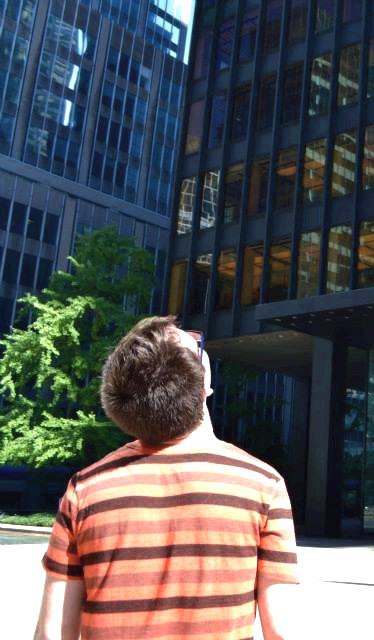
- About the Author
- Rob Carney, the founder and lead writer for Architecture of Cities has been studying the history of architecture for over 15 years.
- He is an avid traveler and photographer, and he is passionate about buildings and building history.
- Rob has a B.S. and a Master’s degree in Architecture and has worked as an architect and engineer in the Boston area for 10 years.
Like Architecture of Cities? Sign up for our mailing list to get updates on our latest articles and other information related to Architectural History.
